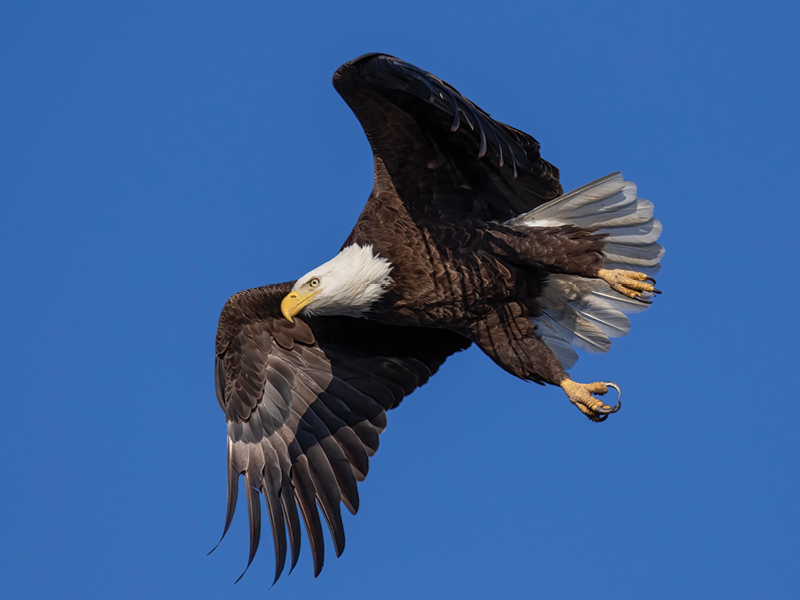Every February since 1998, thousands of people across the nation and the world participate in the Great Backyard Bird Count (GBBC), an annual four-day event using data collected by ordinary people to document wild bird counts and movement. Sponsored by the National Audubon Society and the Cornell Lab of Ornithology, the GBBC asks participants to count birds for as little as 15 minutes on one or more days of the four-day event, and then report their sightings online at birdcount.org. Visit the website to find this year’s dates.
During the GBBC and year-round, East Texas residents have the luxury of sharing outdoor spaces with a multitude of birds, catching glimpses or hearing their distinctive chirps from the comfort of a back porch or anywhere in the area’s bevy of state parks and wildlife preserves. The region’s dense woodlands and open lakes offer a multitude of friendly habitats for a variety of birds, and this time of year, bird populations increase as numerous migratory species fly through or linger.
Some of the region’s regular avian residents are wood duck, wild turkey and woodpecker species as well as the pine warbler, Backman’s sparrow and brown-headed nuthatch. Winter visitors range from the spotted towhee, LeConte’s sparrow and American woodcock to the grand Bald Eagle and American White Pelican.
Cliff Shackelford, a Nacogdoches ornithologist for Texas Parks and Wildlife, says birds that are generally found farther north during nesting season migrate south as the weather grows colder, and East Texas is the receiving ground for a variety of birds during the winter months.
“People think there’s like one or two ducks and one or two kinds of sparrows — we’ve got easily a dozen types of each of those that winter in our area,” he explains.
Other winter-resident birds he likes to spy include the white-throated sparrow, yellow-bellied sapsucker and dark-eyed junco, plus a slew of various waterfowl. Shackelford also says the cooler temperatures lead to increased activity among the birds.
“They’ve got to increase their caloric intake, so they’re a lot more active,” he says. “You see the opposite in August when it’s so bloody hot — they want to take a siesta, they don’t want to move — just like humans.”
The East Texas region is home to 10 state parks and a great number of lakes, wildlife preserves, and arboretums — all well-suited to birding activities. Caddo Lake State Park and Caddo Lake Wildlife Refuge near Marshall are home to more than 200 species of birds, and a variety of places surrounding Tyler attract winter migrants.
Just south of Mineola, 2,900 acres on the Sabine River comprise the Mineola Nature Preserve, a natural space responsible for Mineola’s designation as the Birding Capital of East Texas in 2003. The year before, a Texas Parks and Wildlife study identified upwards of 272 different species of birds in residence.
The preserve is open seven days a week and admission is free. Mineola City Manager Mercy Rushing says one of the city’s primary goals in creating the preserve was to encourage residents to spend time outdoors, exploring natural settings.
“We thought it would be a great thing for Mineola — we wanted what we call the naturalists and the nature tourism,” she says. “[Birders] are willing to go to remote areas — they are willing to go anywhere they need to go to see certain birds.”
A variety of other local communities affiliate themselves with feathered friends. Wills Point is called the Bluebird Capital of Texas, Rains County is the Eagle Capital, and Kaufman, the Red Tail Capital.
Boyd Sanders, an interpretative ranger at Tyler State Park, says almost any of the area’s state parks are good birding destinations, noting that smaller lakes tend to be better for seeing ducks and migratory species. Sanders leads Friday and Saturday bird walks during February’s Great Backyard Bird Count. He also offers Birding 101 classes to help get people started with the popular hobby.
Because the weather most people enjoy the most isn’t always the best for spying on birds, he suggests bundling up and braving the cold. “Definitely dress for the weather,” he says. “Some of my best days have been overcast and drizzly, and we’ve seen tons of them.”
Tyler State Park offers loaner pairs of binoculars to interested visitors, but Sanders recommends birders invest in their own field guides for easy reference during bird walks and classes. He also suggests making contact with organizations like the Audubon Society — Tyler has a local chapter and there’s an East Texas Naturalists group as well — which often host educational meetings and birding outings.
“They can help you learn a little bit more and get you in touch with other people who are interested and knowledgeable about birding,” he says.
For more information about the birds of East Texas and learning to identify them, visit the Texas Parks and Wildlife website (tpwd.texas.gov). It includes information about the various bird species sighted within the region. Also of help: East Texas Naturalists (easttexasnaturalists.com), Tyler Audubon Society (tyleraudubon.org) and Texas Ornithology Society (texasbirds.org).
Birding Resources
• American Birding Association, aba.org
• East Texas Naturalists and Northeast Texas Field Ornithologists (NETFO), easttexasnaturalists.com.
• Texas Ornithology Society, texasbirds.org.
• Texas Parks and Wildlife, tpwd.texas.gov
• The Great Backyard Bird Count, birdcount.org.
• Tyler Audubon Society, tyleraudubon.org.
Birding Apps
Identifying — and remembering — bird species and sounds is a challenge for most humans, but the National Audubon Society and Wild Birds Unlimited are devoted to making it easier. Birding apps like Merlin Bird ID, eBird and Audubon Bird Guide give inexperienced birdwatchers the resources they need to identify tricky bird species right from their mobile phones. For more information, visit birdcount.org.
Updated from 2016 County Line Archives article, by Clare McCarthy.


